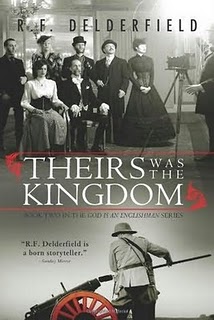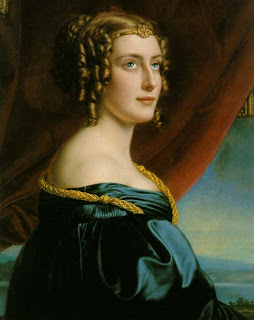Jane Austen (1775-1817) wrote to her sister Cassandra on Thursday, April 25, 1811, from Sloane Street, London, where she was staying with her brother Henry and his wife Eliza, the former Comtesse de Feuillide. Jane was in London to correct proof pages for the publication of her first novel, Sense and Sensibility. Cassandra was at their brother Edward’s estate at Godmersham, Kent.
Jane writes to her sister Cassandra of an assortment of subjects. Then she writes:
“No, indeed, I am never to busy to think of S. and S. I can no more forget it than a mother can forget her sucking child; and I am much obliged to you for your inquiries. I have had two sheets to correct, but the last only brings us to Willoughby’s first appearance. Mrs. K. regrets in the most flattering manner that she must wait till May, but I have scarcely a hope of its being out in June. Henry does not neglect it; he has hurried the printer, and says he will see him again to-day. It will not stand still during his absence, it will be sent to Eliza.
“The Incomes remain as they were, but I will get them altered if I can. I am very much gratified by Mrs. K’s interest in it; and whatever may be the event of it as to my credit with her, sincerely wish her curiosity could be satisfied sooner than is now probable. I think she will like my Elinor, but cannot build on anything else…”
 The Mrs. K. referred to in Austen’s letter was Mrs. Catherine Knight, nee. Knatchbull. She and her husband Thomas “adopted” Jane’s brother Edward and treated him as their own son, sending him on a grand tour of Europe and leaving him their property. Indeed a few years after her husband died in 1794, Mrs. Knight passed on the two estates of Godmersham in Kent and Chawton in Hampshire to Edward. Godmersham is today in private hands, but the Chawton property now is the home of the Chawton House Library and the Jane Austen House Museum, both well worth visiting on your next jaunt to Hampshire. The picture to the left is a portrait of Catherine Knatchbull Knight about the time of her marriage in 1779.
The Mrs. K. referred to in Austen’s letter was Mrs. Catherine Knight, nee. Knatchbull. She and her husband Thomas “adopted” Jane’s brother Edward and treated him as their own son, sending him on a grand tour of Europe and leaving him their property. Indeed a few years after her husband died in 1794, Mrs. Knight passed on the two estates of Godmersham in Kent and Chawton in Hampshire to Edward. Godmersham is today in private hands, but the Chawton property now is the home of the Chawton House Library and the Jane Austen House Museum, both well worth visiting on your next jaunt to Hampshire. The picture to the left is a portrait of Catherine Knatchbull Knight about the time of her marriage in 1779.Jane’s suspicion that the novel would not be available even in June was prescient.
Sense and Sensibility was finally published 30 October, 1811.





































